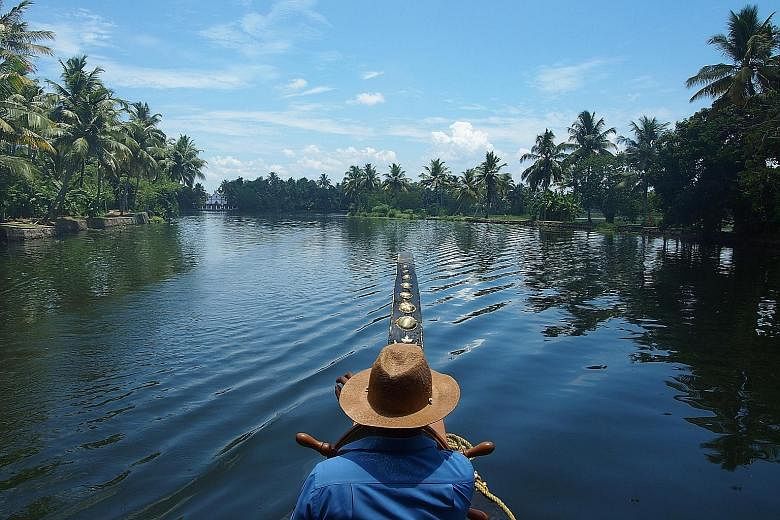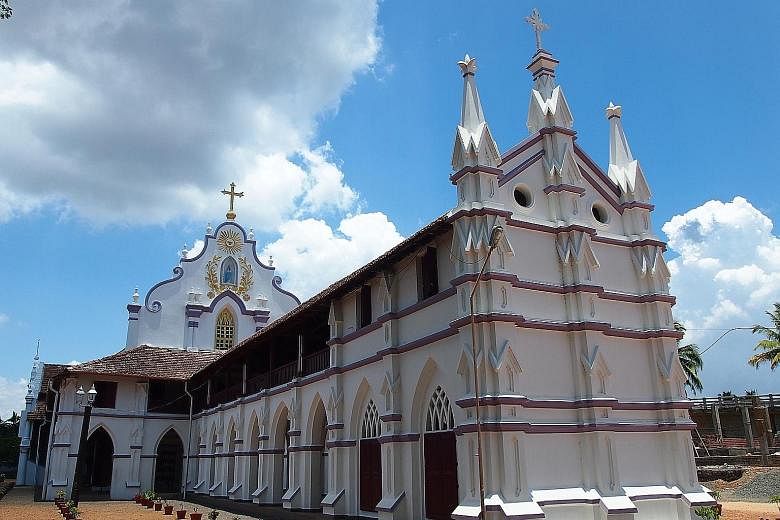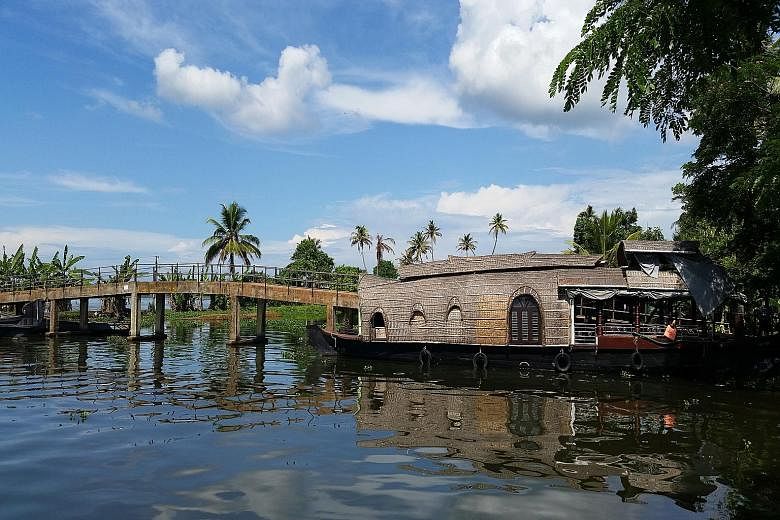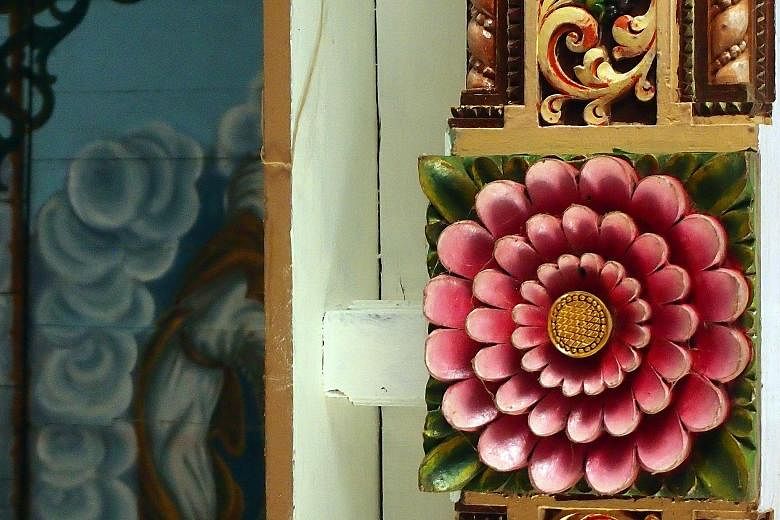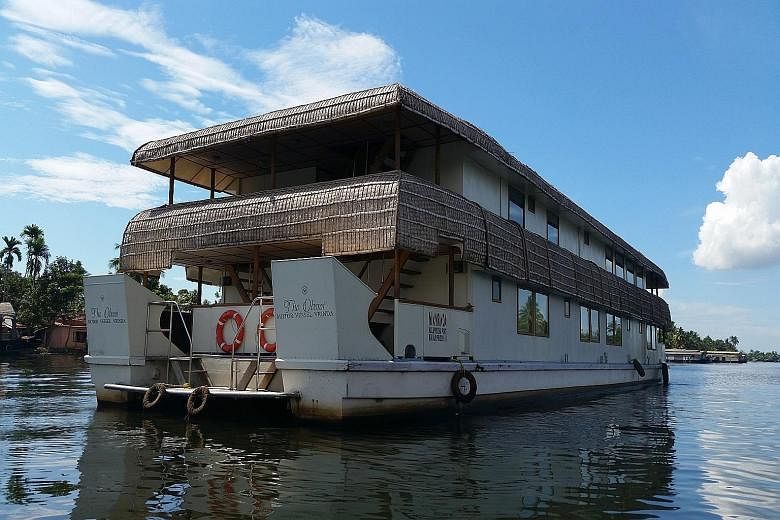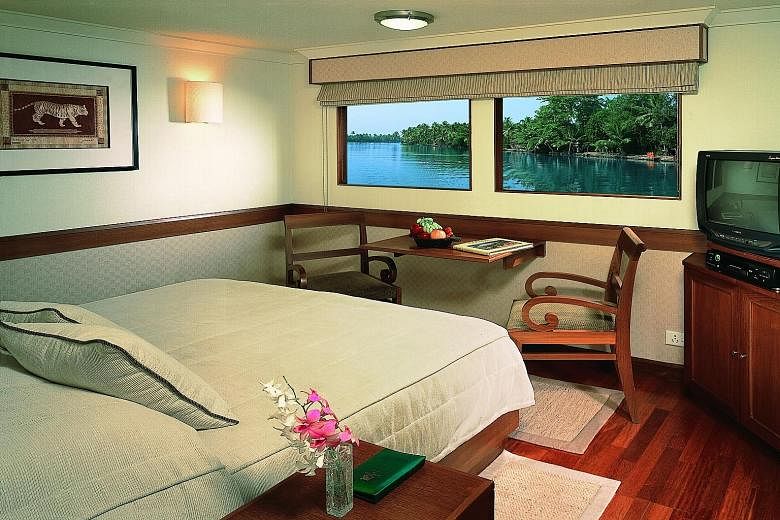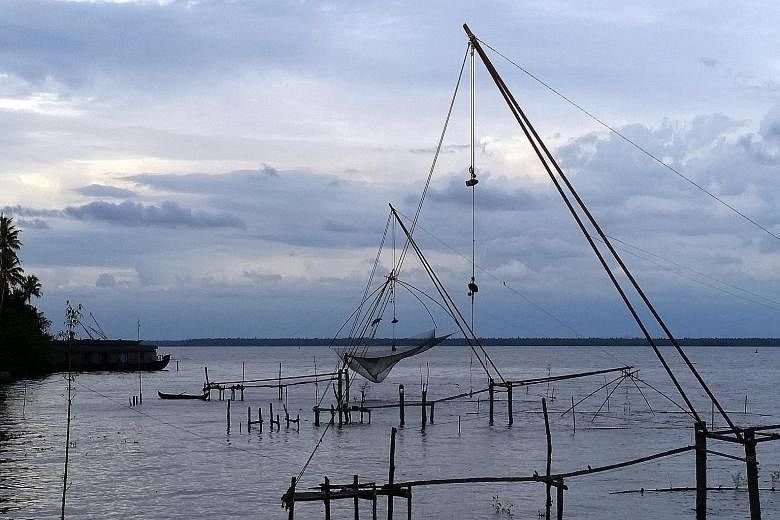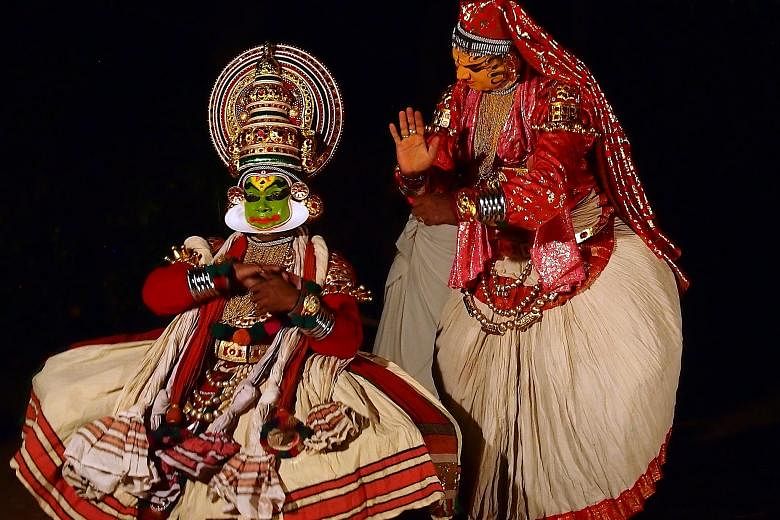In the cool blue light of dawn, Kerala's fishermen are quietly paddling into the misty heart of the lake, their canoes sending soft ripples across the water's inky surface.
The sun's rays glow faintly on the horizon as I watch them The Oberoi Motor Vessel Vrinda, Kerala, an eight-cabin floating hotel that is my home for three nights on Vembanad Lake in Kerala's backwaters.
I have been to India once before, on a family trip to New Delhi, Agra and Jaipur. Kerala is nothing like those northern cities, whose dry, earth-toned landscapes are defined by dissonance - paupers begging outside palaces, otherworldly architecture next to slums, and the loud congested chaos of the city in contrast to the empty expanse of wheat-coloured fields stretching off the highway.
Here, as I wind along waterways at the south-western tip of the subcontinent, life seems harmonious and green.
Towering palm trees arch languidly along the water's edge, banks are lush with fruit trees and emerald-toned backlanes pop with houses painted in rose, teal and tangerine.
-

-
GETTING THERE
-
Guests of The Oberoi Motor Vessel Vrinda are picked up and dropped off in the port city of Kochi, also known as Cochin.
SilkAir offers a daily 7.50pm flight from Singapore to Kochi, which takes 41/2 hours.
TigerAir also has a 10.50pm flight to Kochi four nights a week.
The drive to the backwaters takes about two hours from the airport and one hour from the centre of town, depending on traffic.
Children ride bicycles and play cricket in quiet backlanes and we wave to them and to families bathing in the canals, who all wave hello in return.
At 96.5km long and 14km at its widest point, Vembanad Lake is India's longest lake and Kerala's largest, part of the 1,500km network of canals, lagoons, lakes and rivers which run parallel to the Arabian Sea along Kerala's tropical coast.
Each day, we visit a different destination on the backwaters, catching glimpses of local life and Keralan culture along the way.
Most visitors here stay on kettuvalom, 20m-long thatchedroof wooden boats which used to ferry rice and spices such as pepper, cardamom and cinnamon from mountain plantations to Kerala's markets and ports. The boats have been converted into full-service accommodations with bedrooms, toilets, kitchens and sundecks where tourists can while away the hours and enjoy the laid-back pace and abundant greenery of backwater life.
From one boat in the mid-1990s, there are now more than 1,000 houseboats plying the waterways. They can be rented for day trips or multiple nights and are fully booked in the high season between December and February, when millions of tourists - many of them domestic - flock to this verdant countryside to escape the dusty urban chaos of cities such as New Delhi and Mumbai.
The backwaters are even popular during the monsoons in October and November, when tourists from Gulf cities such as Dubai come to Kerala to bask in what is, for them, a rare commodity - rain.
The Vrinda (www.oberoihotels.com/kerala-backwaters), owned and operated by The Oberoi chain of luxury hotels, is the only accommodation of its kind and calibre in the Kerala backwaters. It is not a traditional houseboat. Eight air-conditioned cabins, each with a king-sized bed, full bathroom with hot-water shower, television, DVD player and wide windows, line the lower deck of the floating hotel.
The boat's second level includes the kitchen, dining room and an informal lounge area, and there are cushions and daybeds for sunbathing on the roof deck.
The Vrinda has plied the backwaters since 2003, and though the amenities, furniture and decor are not new, everything is functional and there is a laid-back charm. The vessel suits the destination and is the height of luxury on the lake.
A two-night voyage costs about 100,000 rupees (S$2,140) a cabin, and a three-night cruise is 133,500 rupees. This includes all meals, guided tours, evening entertainment and return transfers between the coastal city of Cochin and The Oberoi's dock on the lake. Each transfer takes 11/2 to two hours.
Some guests say one or two days is more than enough to experience life on the lake, and I agree, but I enjoy my three days on board. Three days allow me to settle into the bucolic pace of life and experience the vessel's full itinerary, which runs on a three- day rotation. The boat has daily check-ins, so guests can join and leave the boat at any point on its journey around the lake when it is in operation from October to April.
By 8am, the waterways are awake with bird cries and boat engines, and a couple of mornings I wake up early to read and write on the deck, half-tuned to the loud, rhythmic thwack of sari-clad women whipping their laundry on the riverbank.
Every morning, we cruise around the lake while guests eat breakfast. At about 10am, we are picked up by a rice boat - a smaller version of the kettuvalom - for the morning's tour.
My favourite excursion is on my first day on board, when our guide takes us to the exotically beautiful Saint Mary's Syro-Malabar Catholic Forane Church in Champakulam, one of the oldest churches in India. It was founded in AD427 by the Nasrani, early Indian Christians who were converted by Saint Thomas in the first century and are one of the oldest Christian communities in the world.
The church, on the same site since the fifth century, has been influenced over the millennia by the local Hindu and Jewish communities, whose symbols can be seen on the brightly painted walls and ceilings of the church. Multicoloured lotus flowers are carved into the beams and columns of the church, for example, and the pulpit is in the shape of a lotus bud, rising from the trunk of an elephant.
Another day, we leave our rice boat and walk down unpaved paths to a riverside village. Canals and dykes form borders around newly planted rice fields and every home seems to have a courtyard full of fruit trees and gardens full of vegetables.
Rice farming is one of the main occupations here and almost all the rice in Kerala is grown by hand. The state's democratically elected communist government buys the rice and gives it to local cooperatives for distribution among the people. The government also provides free access to medical care and public schools and, at 94 per cent, Kerala has the highest literacy rate in the country, compared with 74 per cent nationally.
As we walk through the village, children stop to say hello and ask us not for money but for pen and paper. A young woman who grants our request for purple mangoes off a nearby tree refuses to take our money in return, and the family of an artist welcomes us into their home, where paintings of communist icons Karl Marx and Vladimir Lenin hang on the walls.
Life in Kerala feels abundant and the people seem happy and well cared for. Yet, it is apparently the high literacy rate which is causing problems for the local government. The well-educated people no longer want to work in the rice fields, but the state's industrial development has lagged behind and there are not enough whitecollar jobs to meet demand.
Many Keralans are moving overseas and the new, multi-storey houses which we see from time to time along the waterways attest to their success as engineers, nurses and veterinarians who are sending money to or building houses for their families back home.
Getting off the boat to walk through the backlanes is the best way to experience these details of Keralan life.
It is April, the hottest time of the year, and we are melting under the strong, ripe sun pulsing overhead.
On our way back to the Vrinda, we pass dozens of unoccupied houseboats moored along the canals and I wonder how relaxing and picturesque the waterways would be if all these boats were combing the waters with us.
Back on board for a late lunch, the staff are all helpful and attentive. Each meal comprises three or four courses in a mix of Indian and Western-style dishes, which guests order from a daily a la carte menu.
Despite a watery curry here and an overcooked piece of fish there, everything is mostly tasty and satisfying.
One of my favourite meals is the sadya, which means banquet in the Malayalam language spoken in Kerala. The traditionally vegetarian meal consists of more than a dozen dishes - including curries; sambhar vegetable stew; rasam, a sour South Indian soup; and pickles - which are served clockwise on a banana leaf.
I have second and third helpings of the pan-seared kingfish, Keralan chicken cooked in tomatoes, onions, coconut and spices, sambhar and a Kerala-style yellow dahl, which are delicious. I cannot resist the ada payasam - a sweet and soupy Keralan rice pudding made with milk, ghee, sugar and cardamom, topped with chopped pistachios.
After lunch, we have three to four hours to relax until the evening's performance of Keralan music or dance.
Guests lounge on deck or cool down in their rooms, where they nap or watch boats and palm trees pass at eye level.
The sky is clear, almost an electric shade of blue and, as we drift peacefully past lagoons overflowing with water lilies and low-hanging trees with fruit ripe for the picking, it is easy to see why Kerala is often called God's Own Country.
A heron flies gracefully out of our path and I am happy to have this time alone to sink into the soothing rhythm of the waterways.
Later in the evening, once the sun has set and we are moored at The Oberoi's dock - which we do each night - we are treated to a musical performance. My favourites are the Mohiniattam and Kathakali dances.
Two teenage girls sweetly dance the Mohiniattam - a classical women's dance style developed in Kerala in the 16th century. Through delicate twists and positioning of the fingers, a coy side glance of the eyes and light stomping of their heels, they tell the story of a mother and her tempestuous, troublemaking child. It is a spellbinding performance and all the guests clap enthusiastically at its end.
By comparison, the Kathakali dance - a stylised classical dance drama known for detailed gestures and defined movements which was developed in Kerala in the 17th century - is dramatic and fierce.
Under a mango tree at The Oberoi's dock, two dancers dressed in elaborate costumes with faces painted green and yellow stick out their tongues, make strong, lunging gestures and scream to the intense beating of drums. I cannot follow the story so I have no idea what is going on, but I am awed by the energy of their performance.
The dances are a wonderful way to wrap up the day's activities and I appreciate the opportunity to learn more about local culture. After dinner, I struggle to keep my eyes open and am ready for an early night's sleep.
On my way back to my cabin I see a couple of fishermen again, this time bouncing along thin planks of wood as they walk towards their diamond-shaped Chinese fishing nets.
Attached to ropes and curved bamboo poles, they rise out of the water. I stop to see if the fishermen have caught anything - they are hoping for shrimp, I am told - but the nets look empty in the dim light of the moon.
I head to my cabin as they lower their nets back into the water for another try. I am spent, but they will not be sleeping anytime soon. They continue patiently, slowly hauling their nets in the dark, soundless night.
Here, it seems, I have found another side of India.
•This trip was sponsored by The Oberoi Group.
This is the third of a four-part Voyages series on the best boat trips in the region.
Life along the backwaters of Kerala at str.sg/ZgxU
